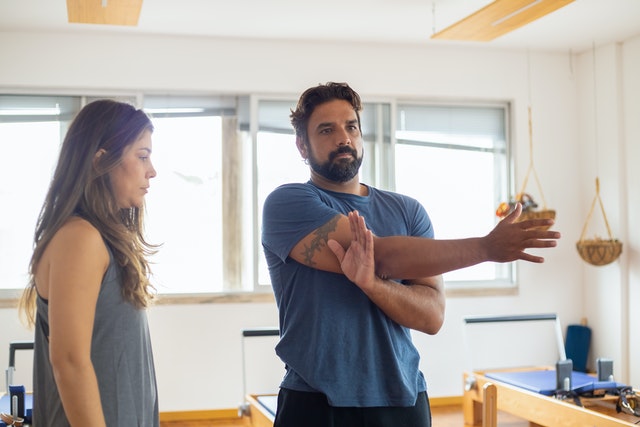If you are suffering from an illness or injury that happens to restrict your movement, you’ll find your doctor recommending you to see a physical therapist. A physical therapist is a trained medical professional that helps evaluate and treat patients with various illnesses and physical injuries that may limit an individual’s mobility. Physical therapy is highly beneficial to all individuals, whether healthy or not. So, here are six benefits of seeking help from a physical therapist.
1. To Recover or Prevent an Injury
Are you suffering from mobility issues, or are you an athlete? If yes, then a physical therapist should be someone whose contact information you should have. Physical therapists are well versed in the inner workings of our body’s mechanics and musculoskeletal systems. With this information, a physical therapist can easily develop a regimen that is specifically tailored to you to help with your recovery or prevent an occurrence of an injury, especially with athletes. With the right treatments, diet, and exercise, your body can quickly bounce back to its natural peak condition.
2. Improving Your Body’s Balance and Coordination
Most studies have stated that one of the leading causes of accidents and injuries is poor body balance and coordination. A physical therapist is well-positioned to assess your condition and recommends the best course of action to be taken. During your sessions, the physical therapist will screen you and then simulate real-world situations to accurately assess your limitations.
All these tests are done in a controlled environment to avoid the risk of injury or accidents. These sessions are beneficial since they expose you to exercises and protocols that will help improve your condition.
3. Recovery from Stroke
A stroke is a condition that results from the blockage of the arteries responsible for taking blood to the brain. Strokes can at times be fatal, but in case you survive, there are always residual effects; in some cases, an individual might lose mobility. So, with physical therapy, you can regain complete functionality or just enough that you won’t have to rely on others to do some basic movements.
Since strokes primarily damage the brain, physical therapy can help the brain bounce back and heal itself through a process known as neuroplasty. It is important to remember that strokes tend to vary; hence, the stroke recovery process and physical therapy results might differ.
4. Eliminate or Alleviate Chronic Pain
Over time you’ll realize that there are some chronic pains that seem incurable with medication. All the drugs seem to do is lead to a pain killer addiction, and your body develops a resistance to the pain killers. These pains are usually a result of a pre-existing injury or an underlying condition like arthritis or fibromyalgia.
The best way to deal with such a condition is physical therapy since its main aim is to address the source of the pain. There are various physical therapies that are known to cure chronic pain without the pain ever returning completely; such techniques include electrical stimulation and taping.
5. Fighting Cardiovascular Diseases and Managing Diabetes
Over the past decade, cardiovascular diseases have risen to be one of the leading human killers, but humans have a fighting chance with physical therapy. With their vast knowledge, physical therapists have developed various cardiac rehabilitation techniques that have significantly improved the lives of people living with or at risk of cardiovascular diseases.
As for lung diseases, there are several techniques and exercises that can help increase lung capacity and clear fluids from the lungs. As for diabetes, the physical therapist can come up with exercises and techniques that allow diabetic patients to regain sensation in their feet. The exercises can also help regulate blood sugar levels.
6. Improve Performance in Athletes
Not only does physical therapy treat or prevent injuries in athletes, but it can also help improve their performance. Elite athletes rely on physical therapists to help them identify imbalances and weaknesses in their bodies. Improved performance in an athlete can be achieved through physical therapy by the therapist determining which muscles and exercise regimen an athlete needs to work on in order to improve.
Closing Thoughts
There are plenty more benefits of seeing a physical therapist, such as managing age-related issues and avoiding surgery. It is crucial that you acknowledge that there are never quick fixes when it comes to physical therapy. You have to put in the effort to achieve the desired goals. All physical therapists have different approaches to how they help their patients.















